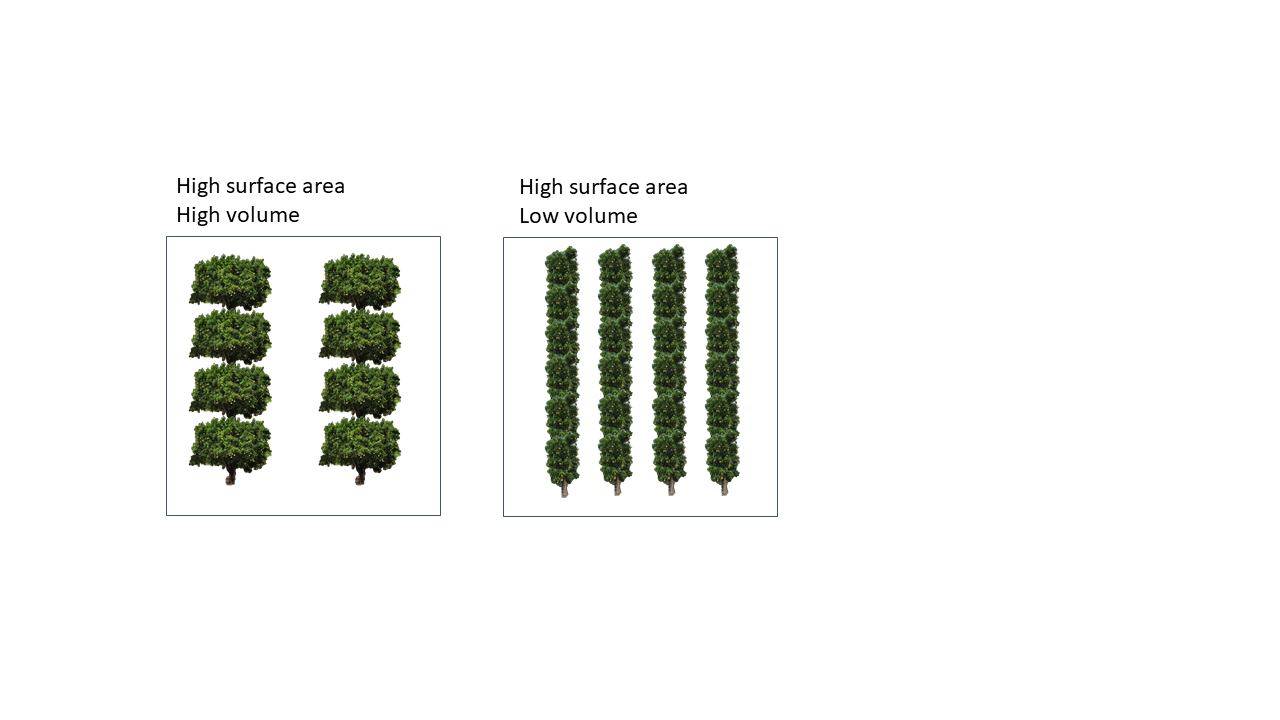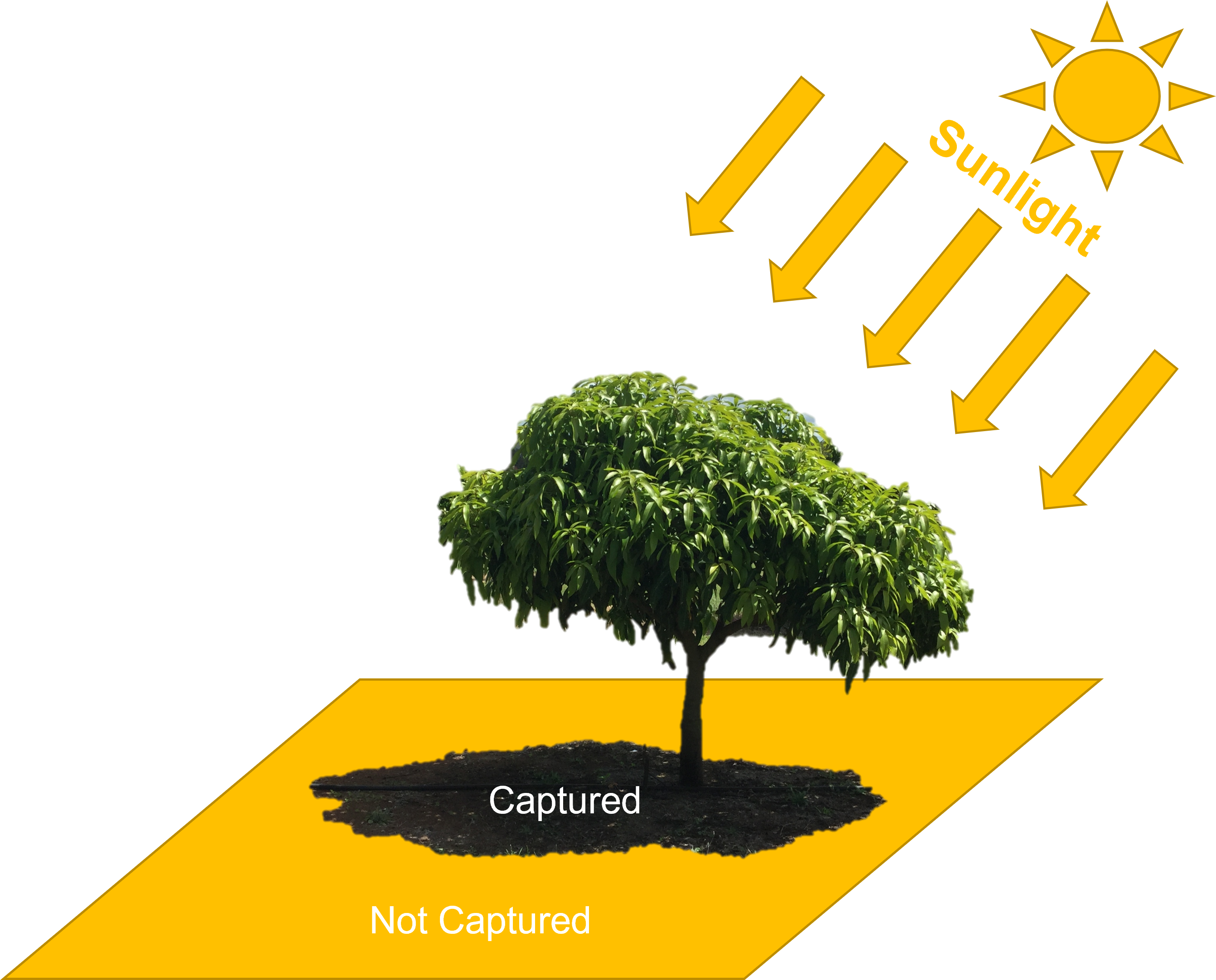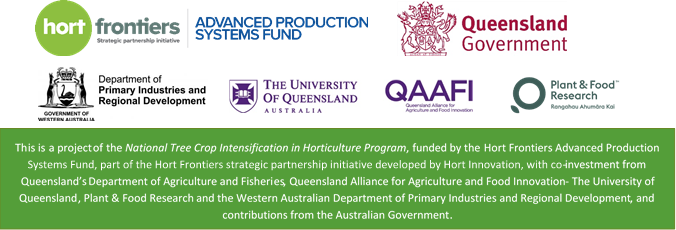Shining a light on efficient mango production
Part 1 of the Mango Small Trees Initiative Article Series.
Mangoes need sunlight to grow, bear fruit and everything in between. Simple, right?
But how much sunlight? Where do we need the sunlight? And how do we make the most of the sunlight we have?
These are all questions the DAF Mango Small Trees Team are trying to answer as part of the National Tree Crop Intensification in Horticulture Project (AS18000).
Understanding how sunlight interacts with mango leaves throughout the canopy is a major theme of the project, as the energy in light is the driver of photosynthesis, tree growth and fruit production. Ultimately, it plays a big part in understanding how to make a mango farm more efficient.
LIGHT INTERCEPTION
Light interception is the percentage of the total sunlight falling on an area of land that is intercepted by the tree. This was investigated in relation to growing mangoes in a high-density system. High light interception is fundamental to making a mango orchard more efficient. The question to be considered is “How can we make sure that as much light as possible is hitting the tree and not the ground?” The answer is: increase the surface area of mango tree per hectare.
The difference in light interception between a conventional mango orchard planted at 208 trees per hectare and a high-density orchard planted of 1250 trees per hectare was measured for five-year-old Calypso trees. Conventional mango plantings were found to intercept only 14% of the light, compared to high density which was able to intercept 49% of the light.
LIGHT DISTRIBUTION
Light interception is only part of the story. Another important part is how efficiently the tree uses the light it captures, or light distribution. Light distribution describes what part of the tree is getting light. Often, in large, thick trees all light hits the outside of the tree and only a very small amount gets into the middle. This would be considered poor light distribution. Light distribution and its implications on productivity is one of the areas being focused on in the current project.
One of the ways that mango trees lose efficiency is through leaves inside the tree not getting any light.
Leaves are designed to capture light, and turn it into energy, but when the plant has put the resources into creating leaves that don’t capture any light, those resources are wasted. By increasing the amount of light penetrating into the heart of the canopy, the number of unproductive leaves is reduced, and efficiency is increased.
There are several ways to make sure light is getting into the middle of the tree, one of them is meticulous pruning, which is often time-consuming and expensive. Another way is to decrease the canopy volume, while maintaining the surface area of the tree or its ‘outer skin’ which captures most of the sunlight.
A higher surface area to volume ratio is beneficial as shown in the figure below, where the low-density orchard has a high surface area, but a high volume, giving a low surface area to volume ratio. That means there are a lot of leaves in the shade that are not photosynthesizing. In the high-density orchard, there is also a high surface area, but a low volume, giving a high surface area to volume ratio, with a lot less leaves in the shade that aren’t photosynthesizing.
 FRUIT QUALITY
FRUIT QUALITY
Light levels are very closely related to fruit quality. Too little light results in pale fruit that get downgraded, but too much light results in sunburn and fruit are thrown in the bin.
Overall pack-out assessments conducted as part of the last project showed that high density plantings had approximately 65% first grade fruit, 33% second grade fruit and 2% rejected fruit. Low density plantings had approximately 50% first grade fruit, 44% second grade fruit and 6% rejected fruit.
There was no difference in the sunburn between the two different densities. Better pack-out and less rejects shows we’re on the right track with the interaction between sunlight and fruit quality. The next step in this project is to look at what other factors other than the light levels (e.g., temperature and water stress) are contributing to sunburn and we aim to make the amount of sunburnt fruit zero.
THE FUTURE IS BRIGHT
One thing that is very clear about the work that has been done in light is that it is very important and forms a basis for how much energy a tree can produce.
There are still gaps in our knowledge and the team at DAF are working as part of National Tree Crop Intensification in Horticulture Project to try and understand as much as we can about mango trees and light. It is hoped this research can be used to help make mango farms more efficient.
Light is just one of the themes being investigated in this project, keep an eye outfor our next theme in a later issue of Mango Matters.

